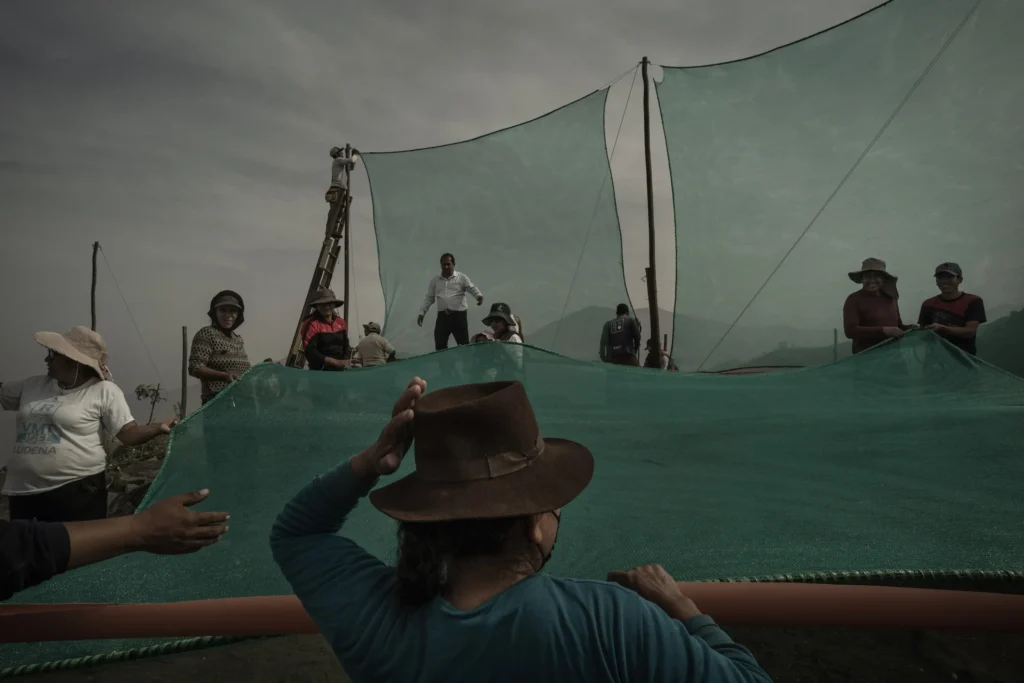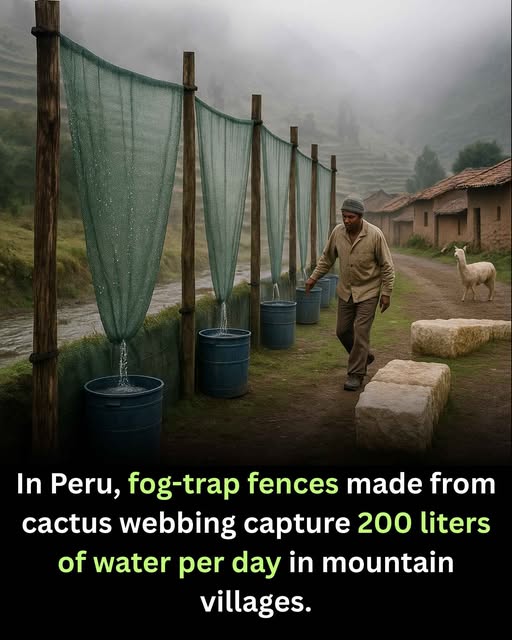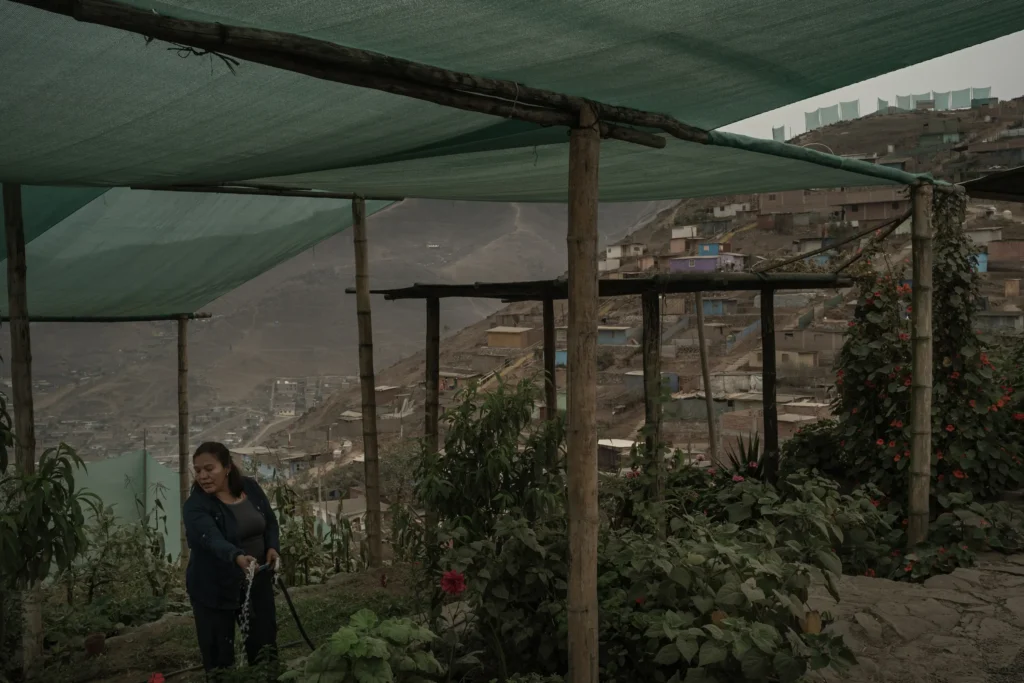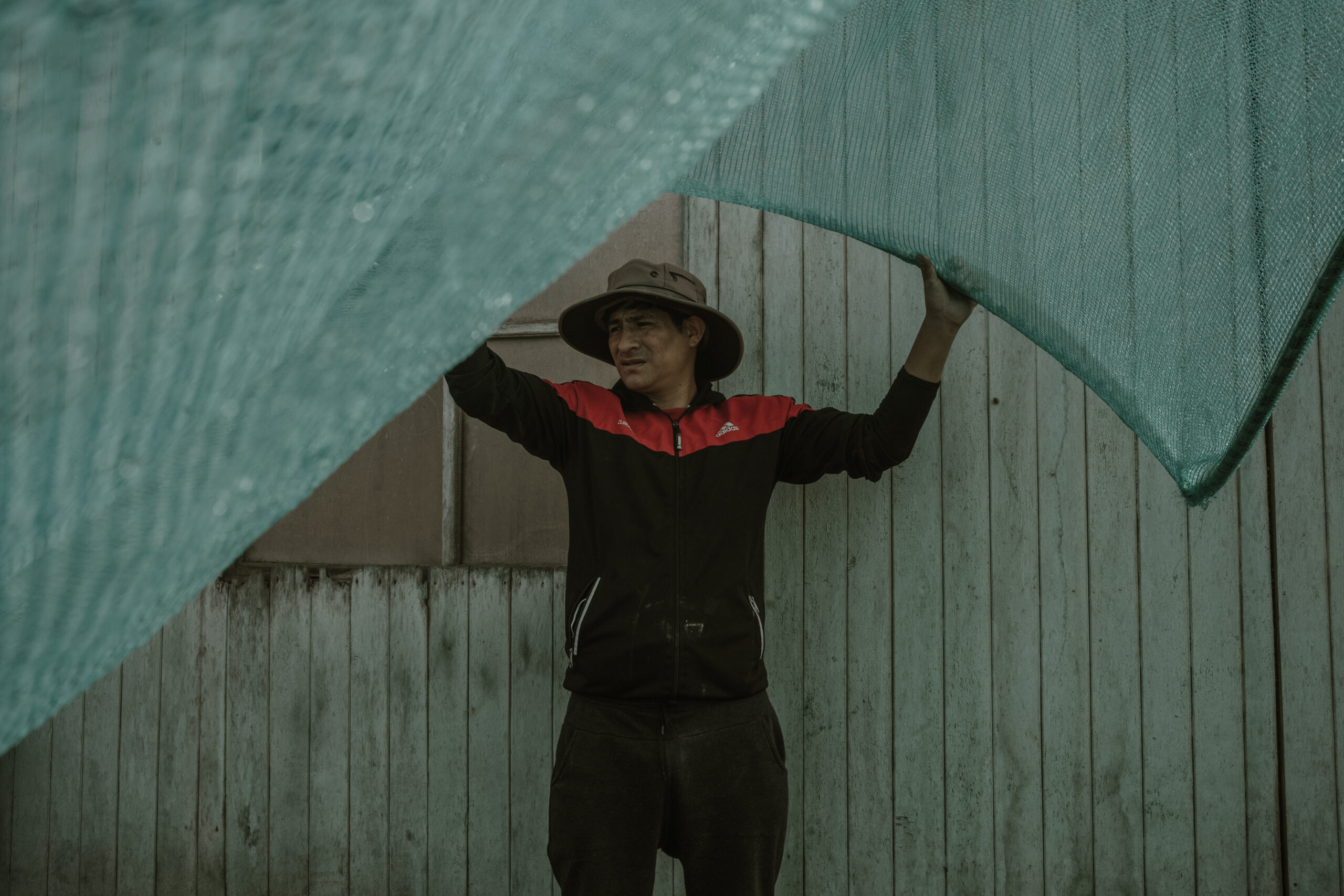Catching Clouds: How Peru’s Villages Turn Fog Into Water

High in the misty mountain villages of Peru, a centuries-old wisdom is being reawakened. With ingenuity born from both necessity and tradition, communities are reviving a natural technology: fog-trap fences woven from cactus fibers. What seems like little more than wooden frames strung with cactus webbing is, in fact, a lifeline — one that turns drifting clouds into clean, drinkable water.
How the Fences Work
The design is deceptively simple. Strips of fibrous cactus mesh are stretched across vertical frames and positioned along wind corridors where fog gathers thickest. As mist passes through, tiny droplets cling to the fibers, condense, and drip downward into collection troughs. Each fence can yield as much as 200 liters of fresh water per day, a critical supply in regions where rainfall is scarce and traditional infrastructure nearly nonexistent.
The idea mirrors the cactus itself, a plant that has mastered survival in dry environments. Its textured surfaces naturally harvest moisture from the air — and the fences do the same, but on a much larger scale.
Life-Changing Impact
The harvested water is filtered and stored in communal tanks, where it becomes a source not only for drinking but also for cooking and irrigating small crops. For villagers, especially women and children who once walked hours each day to fetch water, these fog-catching fences mean freedom. Freed from the daily burden of water collection, families gain more time for school, work, and community life.
A Sustainable Solution
Unlike conventional infrastructure, fog fences require no electricity, fuel, or moving parts. They are low-maintenance, entirely eco-friendly, and biodegradable, thanks to their cactus-fiber design. Their very existence harmonizes with the surrounding environment, drawing on nature rather than depleting it.
Blending Past and Future
What makes this technology remarkable is not just its practicality but its heritage. The practice of harvesting fog has roots in indigenous knowledge, where observation of local plants and ecosystems offered survival strategies long before modern engineering. By reviving and refining this wisdom, Peru demonstrates that the most powerful innovations are sometimes the most ancient — solutions hidden in plain sight, waiting for us to notice.
In the thin air of the Andes, fences now rise like quiet sentinels, catching clouds and giving them back as water. For the people of these highland villages, each drop is more than sustenance; it’s proof that resilience and creativity can flow even from the fog itself.











